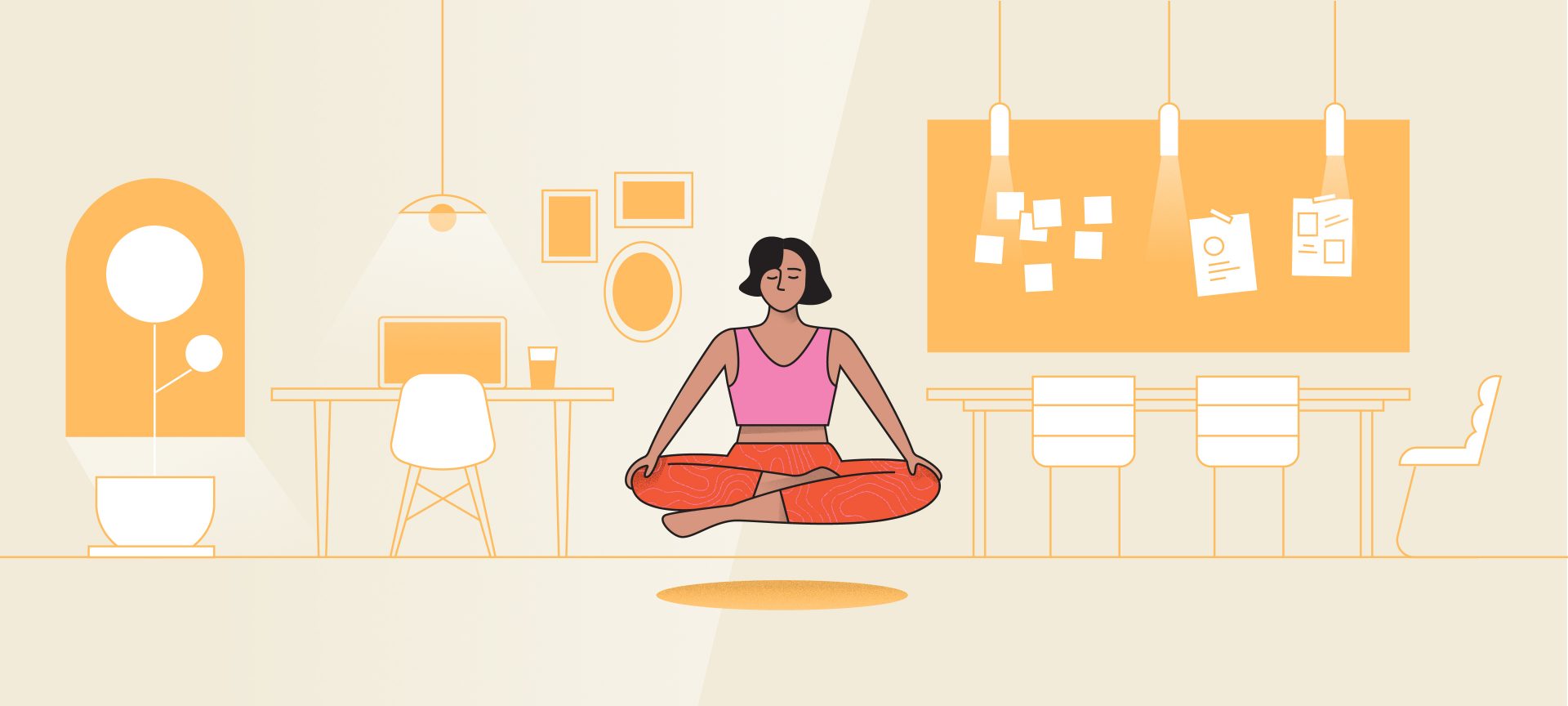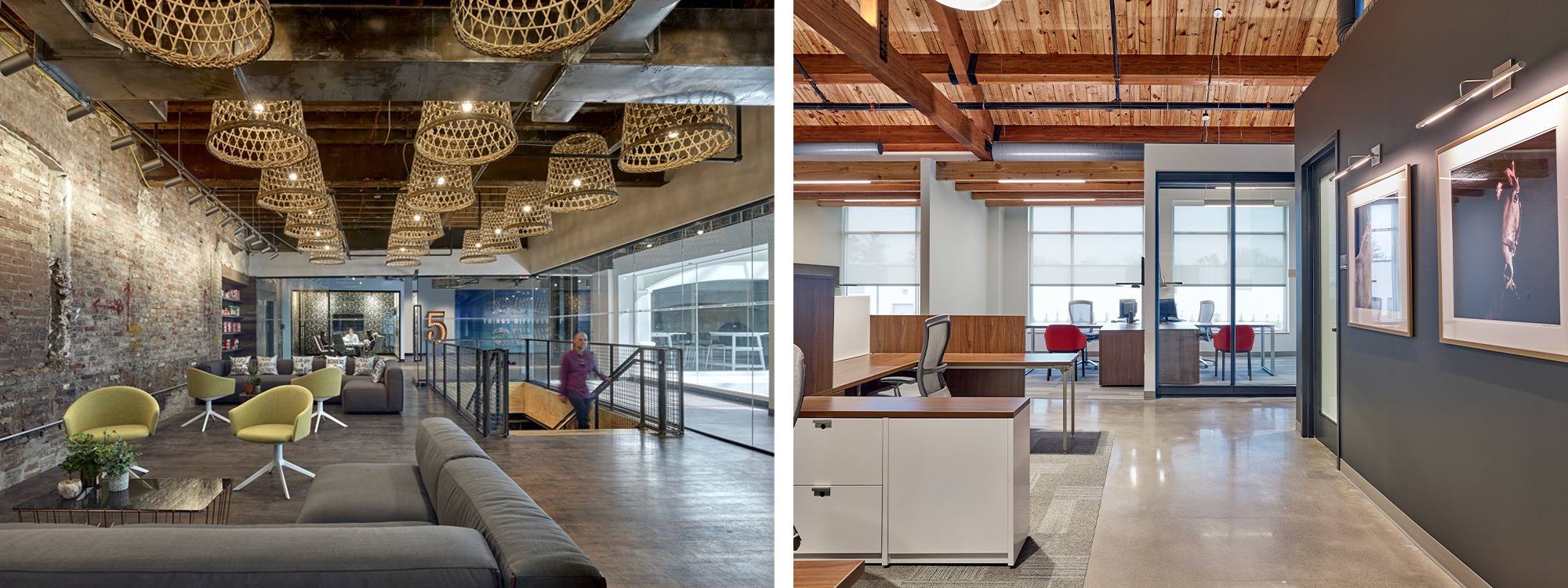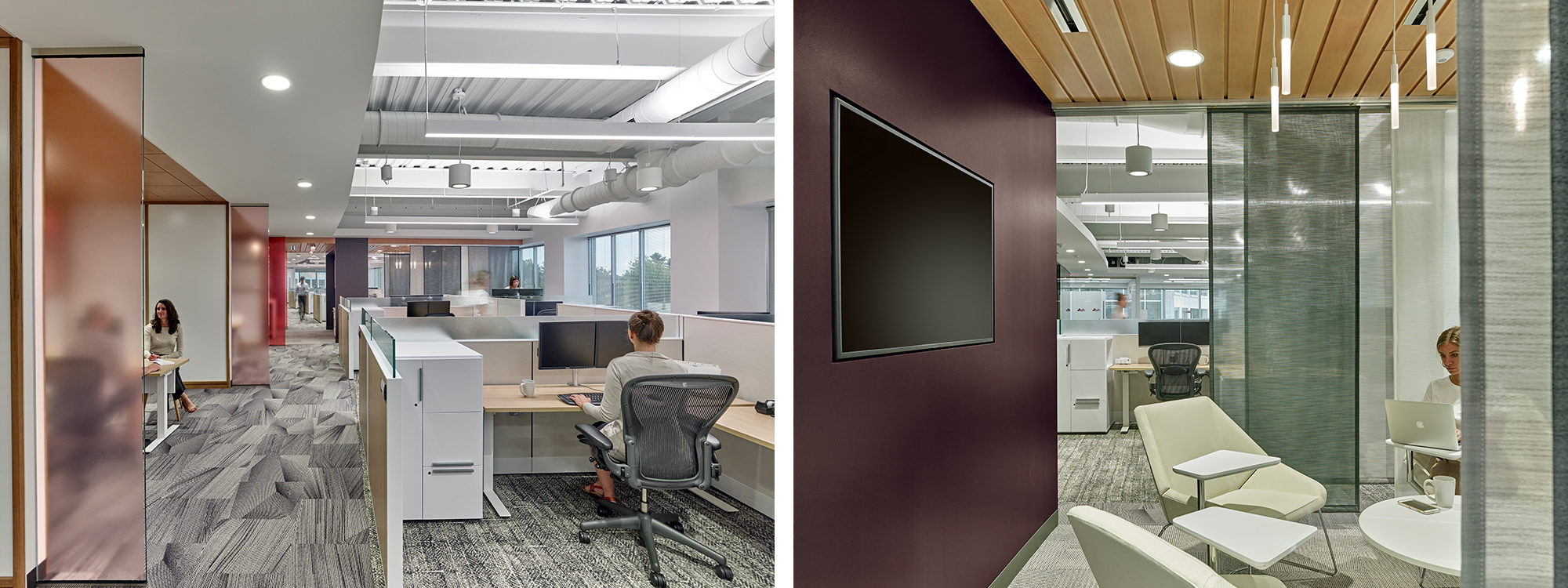Being apart has reminded us how important the shared workplace is for our mental wellbeing. Yet, the idea of going back to the office is causing anxiety for the majority of US workers – two-thirds to be exact according to a recent study. While we were hurled into the WFH scenario without choice, we now have the opportunity to carefully craft our future workplace experience. One that eases the transition, helps to soothe stress, and wholistically supports employee wellbeing.
So, what does this future, healthy workplace look like? We hosted an internal round table to find out. Here are the key strategies we identified.
1. CREATE AN EXPERIENCE
The experience economy has surely taken a hit in 2020, but the desire for unique and impactful experiences is unmoved. In a time when working remotely on a dreamy island beach is a reality for some, the physical workplace needs to respond by offering its users an environment that is healthy, rich with culture, an aesthetic that is on-brand, and – possibly most critically – comfortable to be in. Providing a feel-good, positive environment will ease the transition from digital to physical and will create a wanted, not forced, transition back to the office.
2. PROVIDE OPPORTUNITIES TO BUILD COMMUNITY
The isolation of remote working has made clear the need for stronger social bonds, shared purpose, and common aspirations. The workplace will need to provide settings that foster belonging and inclusivity. Design criteria for collaborative settings should not only emphasize productivity and innovation, they should also consider spatial solutions that reduce stress, lower guards and build trust to ultimately foster strong, engaged personal connections – As Kiel Fisher dubs it, “family-style working”.
Other shared spaces can take a similar strategy – nestled and private settings for one-on-one interactions, lounge arrangements in the round for conversation, farm tables to share a meal. These strategies are not novel, but they are more important in the future workplace which is – as many argue – a place for truly coming together. Building community also strengthens culture, a critical element to workplace satisfaction and something that is craved while apart. And, as we know, culture is contagious face to face.
3. ALLOW AN EASY SWING FROM SHARED TO ‘RESET’ SPACE
Although community will be highly sought after, the need for escape is equally important. Being ‘on’ all day will be exhausting, especially in the beginning when we are all acclimating to new social norms and subtle personal cues. Assigned or owned offices and workstations are not necessarily the answer. Escape can be achieved in calming shared spaces – a small focus room, a booth in a collaboration zone, or a designated quiet area. A balance of both community space and sheltered space for rest allows each individual the choice to work where they choose – making their personal experience in the office one that is within their control and, in turn, happy and engaging.
4. LOOSEN UP AND EMBRACE FLEXIBILITY
Individual flexibility will be a critical workplace policy moving forward. Even when the in-office option offers a culture rich experience and a variety of setting choices, it isn’t necessarily the only ‘place’ that works for…work. The freedom, possible reprieve, and enjoyment that comes with the ability to set ones own schedule has huge positive impacts on personal wellbeing and mental health. How a business defines flexibility varies somewhat wildly in tomorrow’s reality. For some, the office is a destination only if one desires to use it. For others, five days a week on location is a must, but daily start and stop times may vary and extended lunches are all good. Almost 50% of employees say they would likely leave their current job if their employer does not offer a hybrid work model once the pandemic ends. So, workplace flexibility not only aids employee wellbeing, it will also be even more vital in retention and in the growing contest for talent.
5. BALANCE TECHNOLOGY, WORK, + LIFE
A common question soon may be – am I working from home or living in the office? Equipped to work anywhere and everywhere, boundaries will be further stretched and, for many, hard to find. Employers should develop strategies to help their employees maintain balance via education on healthy technology use and consider launching internal and external guidelines to manage the expectations that often lead to an inability to disconnect. Quiet hours, perhaps between the hours of 7:00PM-7:00AM, could be established and identified as a timeframe that email and chat responses are not required. Companies can also support employee mental health by reminding employees to break for meals and to use their PTO which, according to another recent study, 54% of employees are reluctant to do for fear of falling behind.
6. CHAMPION A ‘YOU DO YOU’ CULTURE:
Good intentions only go so far. Leaders will need to fully embrace and promote flexibility for it to succeed and employees will need to preserve the empathy for their peers that exists today. The positive effects of workplace flexibility and balance can only exist if guilt and resentment are kept at bay. Proactively and frequently communicate the policies and suppress any behaviors that breed a judgement culture.
WHAT IS YOUR FUTURE?
The future workplace will continue to evolve and change and business leaders will have to continually challenge the known norm. Wellbeing and mental health will be an ongoing conversation as we continue to assess inclusivity and belonging, manage stress and anxiety, and learn more about individual needs, workstyles, and personal lifestyles.
The workplace experience, design strategy, and wellbeing policies you implement are entirely unique to your business and its culture. So, how do you get there? With no single, ‘right’ solution, defining your future, healthy workplace begins with ‘visioning’ – an exploratory process that facilitates open and free imagining – paired with programming – a critical analysis of your workforce, operations, and functional needs. The combined findings from this process will allow you to examine the data, test the scenarios, and ultimately identify your version of a re-imagined workplace. One that that supports the needs of your business and, equally, the needs of your people.



